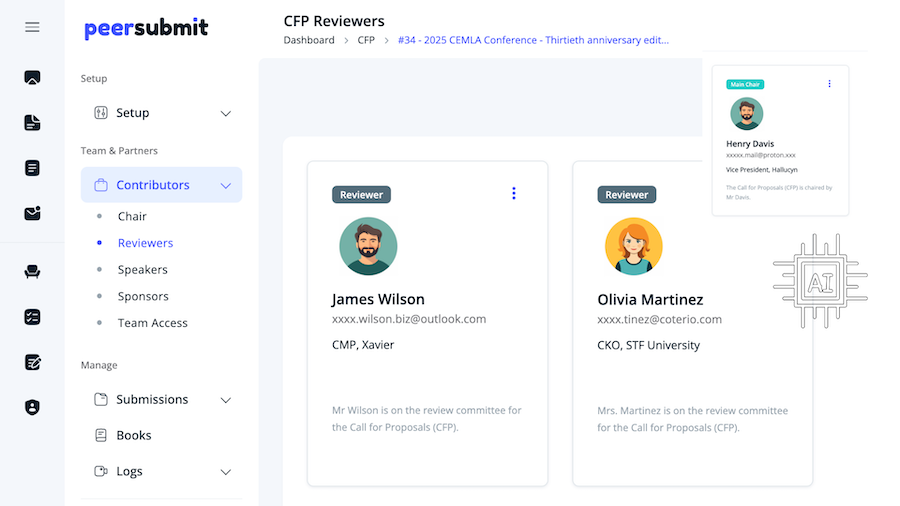The Future of Peer Review: How AI is Reshaping Academic Research
Paige Watson
Published on 12 July 2025Peer review has long been the backbone of academic publishing. It’s the process that determines which ideas enter the scholarly record and which don’t. But ask any researcher, and they’ll tell you the system is under pressure. Delays, reviewer fatigue, hidden bias, and inconsistent standards often slow the dissemination of new knowledge. Now, artificial intelligence is stepping into this centuries-old practice—not to replace human judgment, but to assist, accelerate, and reshape it.
This post explores where AI fits into peer review today, the opportunities it creates, and the risks we need to guard against.

Why Peer Review Needs Reinventing
Peer review as we know it developed in the 18th and 19th centuries, when the volume of scientific publications was manageable. Fast-forward to today: millions of papers are submitted annually across thousands of journals. Reviewers—usually unpaid—struggle to keep up. Papers can take months or even years to clear review cycles.
Major challenges include:
- Reviewer shortages – Journals compete for the same small pool of experts.
- Delays – Long wait times stall innovation and career progression.
- Bias – Gender, geography, institutional prestige, and even language influence acceptance.
- Quality variation – Reviews can be rushed, superficial, or overly harsh.
These problems are not just nuisances—they slow scientific progress. The question is, can AI provide relief without compromising academic integrity?
What AI Can Do in Peer Review
AI is already proving useful in several stages of the peer review process.
-
Manuscript Screening
Before papers even reach reviewers, AI can check for issues such as:- Plagiarism and duplicate submissions.
- Data inconsistencies.
- Citation integrity.
- Compliance with formatting and ethical standards.
-
Reviewer Matching
Finding the right reviewer is notoriously difficult. AI systems can scan databases, analyze researchers’ publications, and recommend suitable reviewers based on expertise, avoiding conflicts of interest. Done right, this can make assignments faster and fairer. -
Bias Detection
AI can flag language that suggests bias in reviews, or highlight patterns across multiple reviews that reveal systemic discrimination. This doesn’t replace human oversight but provides transparency. -
Quality Checks
AI tools can evaluate whether reviews are constructive, complete, and meet journal standards. Editors can use these insights to ensure fairness and professionalism. -
Post-Publication Review
AI can continue monitoring after publication—tracking citations, detecting anomalies in data usage, and even flagging potential retractions earlier.

Benefits: Why AI Could Be a Game-Changer
When deployed responsibly, AI could address some of the peer review’s biggest pain points.
- Efficiency: Automating routine checks frees up human reviewers to focus on deeper critique.
- Fairness: Algorithms, if designed carefully, can reduce geographic and gender bias by widening reviewer pools.
- Consistency: Automated checks reduce variation in standards across journals.
- Transparency: AI can track decisions, offering clearer explanations for why papers are accepted or rejected.
- Scalability: With global research output doubling roughly every 15 years, scalability is critical.
In short, AI has the potential to let peer review keep pace with the accelerating speed of research.
Risks and Ethical Concerns
But there are caveats. AI is not a cure-all, and missteps could amplify the very problems we hope to solve.
-
Algorithmic Bias:
If AI is trained on flawed data—such as historically biased acceptance patterns—it may reproduce or even intensify bias. -
Over-Reliance on Automation:
There’s a danger of editors deferring too much to AI, sidelining human expertise and judgment. Scholarly critique cannot be reduced to pattern recognition alone. -
Transparency Issues:
AI systems are often “black boxes.” Without clear explanations of how decisions are made, trust in peer review could erode. -
Data Privacy:
Manuscripts under review are confidential. Using them to train AI requires strict safeguards to protect intellectual property and sensitive information. -
Unequal Access:
Well-funded journals and institutions may gain access to cutting-edge AI tools, while smaller players risk being left behind, widening inequities in publishing.
What a Hybrid Model Might Look Like
The future likely lies in hybrid models that combine AI assistance with human judgment. Here’s a possible workflow:
- AI filters manuscripts for basic quality and ethical compliance.
- AI suggests reviewers, but human editors approve or modify selections.
- Reviewers write evaluations as usual, but AI flags potential bias or missing elements.
- Editors use AI-generated analytics (plagiarism score, methodological checks, reviewer quality) as decision support, not as a final verdict.
- Post-publication, AI tracks impact and surfaces potential concerns for ongoing review.
This division of labor plays to the strengths of both AI (speed, consistency, scalability) and humans (judgment, context, ethical reasoning).
What Researchers Think
Reactions among academics are mixed. Some welcome AI as a way to lighten their workload. Others fear automation will devalue peer review or make it less trustworthy. A common theme is demand for transparency—researchers want to know when AI has been used, how it influenced decisions, and what data it relied on.
The Road Ahead
For AI in peer review to succeed, the academic community must set guardrails:
- Ethical guidelines to ensure fairness and accountability.
- Audit mechanisms to detect algorithmic bias.
- Open communication so authors know when AI was part of the process.
- Shared infrastructure so smaller journals aren’t locked out of AI benefits.
Conclusion
The peer review process is essential for academic integrity, but it needs modernization. AI is not here to replace reviewers, but to support them in making research faster, fairer, and more reliable.
Platforms like PeerSubmit are already leveraging AI to help conference organizers, journals, and academic institutions streamline review processes and improve research outcomes.
Streamline Your Peer Review with PeerSubmit
- Free to use.
- No Credit Card Required
AI Automation FAQs
Stay Updated with PeerSubmit
Join our mailing list to receive expert insights, product updates, and academic event resources directly in your inbox.
✌️ No Spam — We Promise!